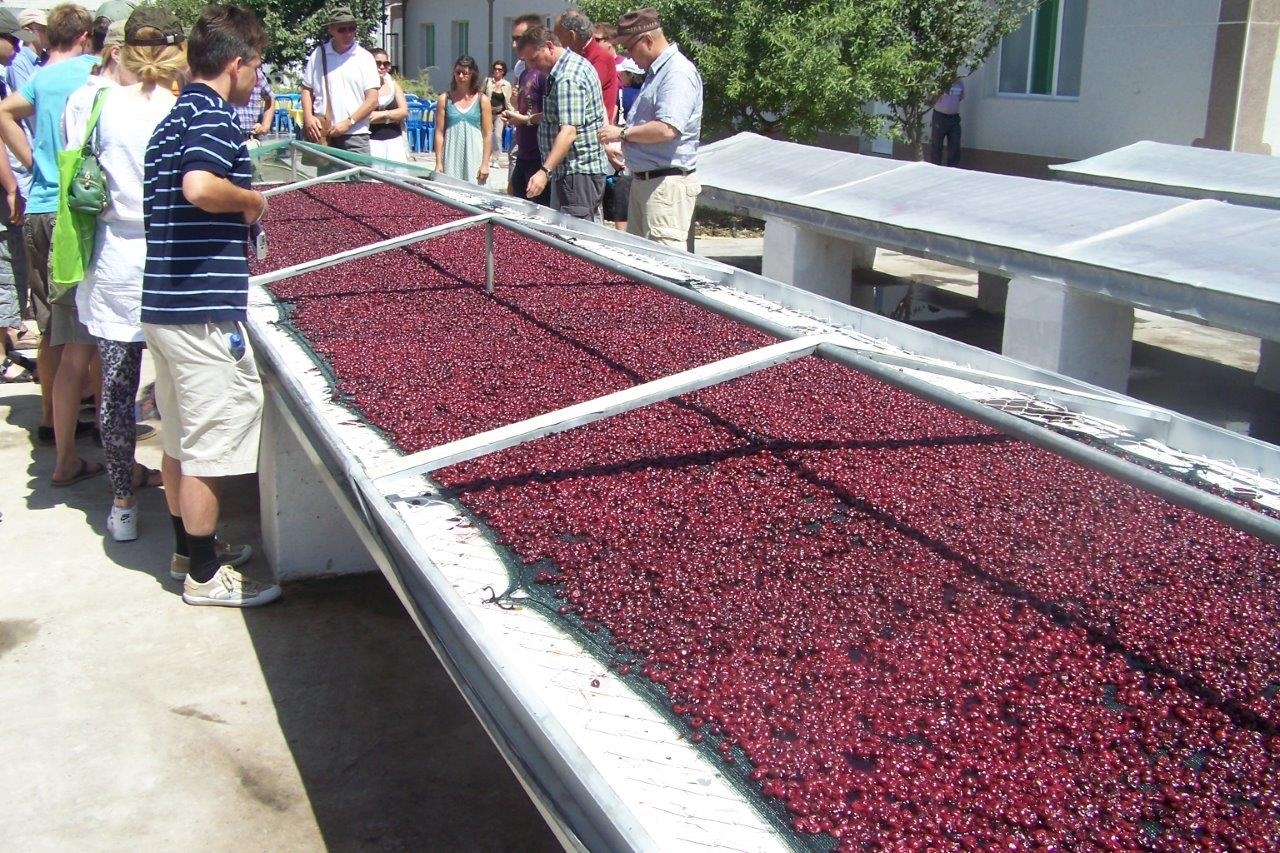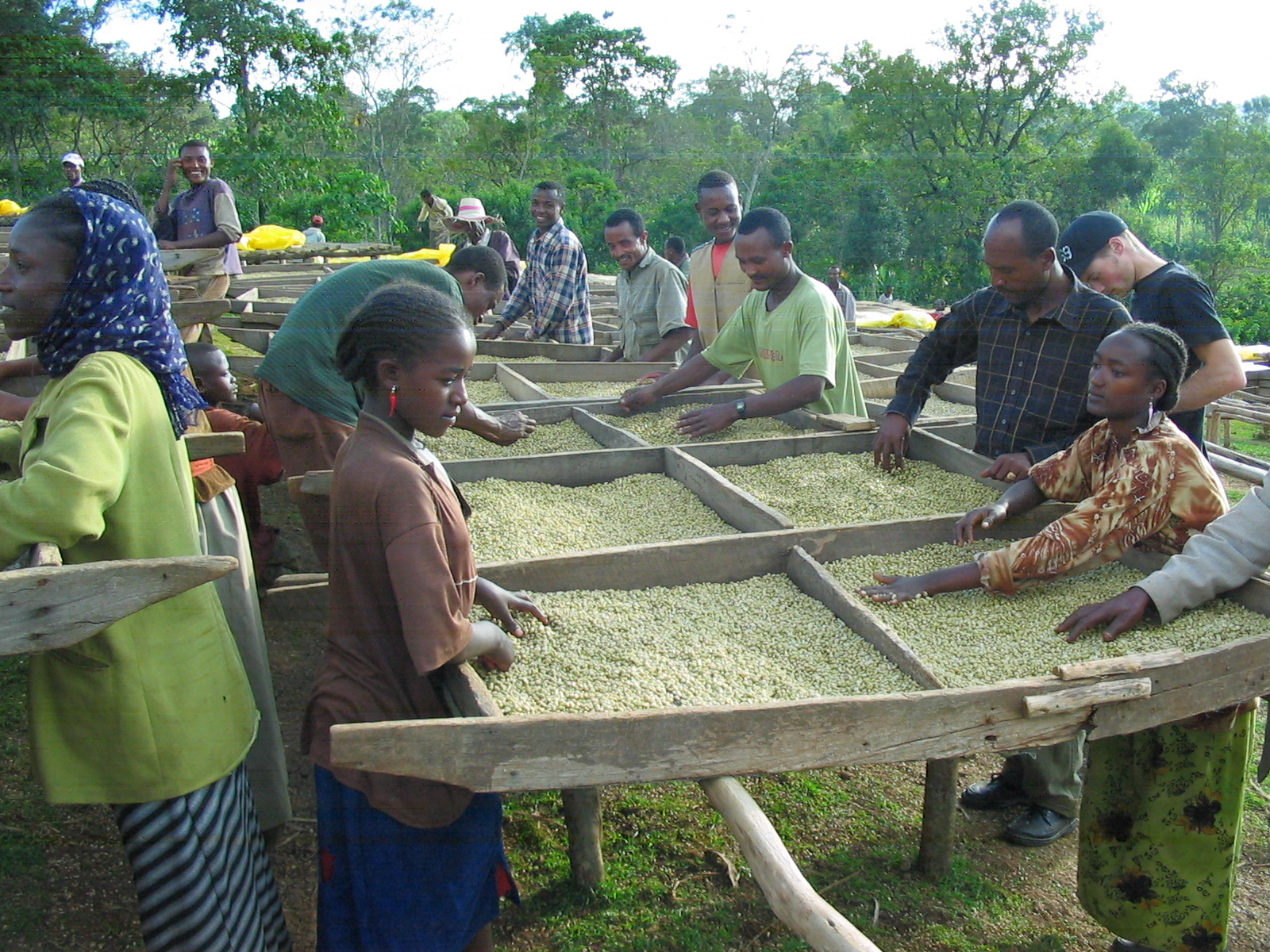

咖啡豆處理法(日曬法、洗水法、半洗水法)
#咖啡豆處理法 #日曬法 #洗水法 #半洗水法
在一杯咖啡能擺上我們的桌上前,往往需要使用不同的步驟去帶出該杯咖啡的味道。而往往當中不同程序的使用方法,均會影響到咖啡本身的風味。例如使用不同的方法去處理咖啡生豆、使用不同的水温去沖泡咖啡豆以至能否篩選出不成熟的咖啡豆。今天這個部落格則會集中於討論不同的咖啡豆處理法會怎樣影響到一杯咖啡的風味。
甜度:日曬法>蜜處理法>半洗水法>水洗法
酸度:水洗法>半水洗法>蜜處理法>日曬法
日曬法和洗水法
普遍程度:
視地區的氣候及資源而定,乾燥有太陽地區->日曬法(最古老),多雨水地區->洗水法
氣候因素:
如上述所提及,乾燥地區如非洲的埃塞俄比亞、巴西及印尼部份日光充足而雨量比較少的地方(至少在收成季節時);而相對的,瓜地馬拉、哥倫比亞、藍山、科納、肯亞、爪哇和巴拿馬等咖啡則較為多雨及濕潤。
口味:
日曬法因為陽光及乾燥度的難以把握,所以風味變化更多,層次以及甜都更明顯。同時相較於日曬法,洗水法則因為處理手法的劃一,所以果實被處理時的影響因素較少,風味的的豐富度及變化則較少。不過事實上兩種處理法都有使用到水去清洗、篩選以及各種方法去乾燥果實,只是日曬法只容許較短的時間果實在水中,而且會原粒咖啡豆日曬;水洗法就會先將果實去除果肉,放在水裏16-36小時,並定時攪動,讓果膠也慢慢在種子上分離,最終也會使用日光或其他方法乾燥果實。而水洗法這種做法則會讓發酵過程製造更多如檸檬酸、蘋果酸及醋酸等的酸性物質,所以水洗法的咖啡豆風味便會更加偏酸。
半水洗法(果日半曬法/蜜處理法):
半水洗故名思義就是只有一半的工序會使用水洗來提取咖啡豆,而另一半的工序則是使用日曬,並在中間加入一些其他的步驟。農民會先以水除掉雜質、果皮、果肉,並選出浮在水面的劣果,再用十天以上的時間去進行日曬處。在一開始日曬的三、四天還需要到每小時翻動一次。因此味道便介乎於日曬及水洗中間,不會如水洗豆酸,亦沒有日曬豆的甜度。
而蜜處理法則是在半洗水法的基礎上的變化版。由哥斯達黎加的咖啡農民帶起的咖啡豆處理法,同樣好像上述先以洗水去除雜質以及劣果。然而,密處理法卻不會去掉果膠,以果膠進行發酵。之所以會叫蜜處理則正正因為留在咖啡豆的果膠,黏黏的,像蜂蜜一樣。留下不同比例的果膠,區分出四種不同的名稱:白蜜(10%左右)、黃蜜(25%)、紅蜜(50%)、黑蜜(100%)。
細味公平咖啡豆的處理法:
細味公平的咖啡豆均主要來自四大洲:非洲(剛果北基伍、盧旺達、埃塞俄比亞斯丹摩、埃塞俄比亞耶加雪夫)、中南美洲(秘魯、危地馬拉、尼加拉瓜、洪都拉斯)、大洋洲(巴布亞新畿內亞)以及亞洲(印尼卡瑤)。所有咖啡豆的處理過程除了包裝及烘焙之外都是在原產地進行。而除了印尼卡瑤使用半水洗法之外,其餘咖啡豆都使用水洗法去處理咖啡豆果實。
Coffee Processing (Natural Coffee Processing, Washed Coffee Processing & Semi-Washed Coffee Processing)
Before a cup of coffee can be put on our desk, there are numbers of procedure to be done in order to bring out the taste of that cup of coffe. Affecting elements include the way the coffee bean are being processed, different temperature of water to brew the coffee and the matureness of the coffee bean. Today episode will be focusing on the different effects on different ways processing the coffee bean.
Sweetness:
Natural > Honey > Semi-Washed > Washed
Acidness:
Washed > Semi-washed > Honey > Natural
Natural Coffee Processing & Washed Coffee Processing
Popularity: Depends on the climate and local resources, dry and sunny places-> Natural Coffee Processing, Rainy places-> Washed Coffee Processing.
Climate Factor:
As mentioned, dry districts such as Ethiopia, Brazil as well as part of Indonesia ; comparatively, climate of origins such as Guatemala, Colombia , Blue Mountain, Cona, Kenya, Jawa and Panama, are humid and rainy.
Taste:
Because of the difficulty to control the temperature and the dryness, the coffee beans under Natural Coffee Processing, the tasing could be more layer and sweet. However, relatively, Washed Coffee Processing is more standardized and so the affecting factor is fewer. In fact, it is not to say that Natural Coffee Processing does not use water and Washed Coffee Processing does not use the sunlight to dry the coffee bean. Both Coffee Processing used water and sunlight and different drying methods to process the coffee bean. Only Natural Coffee Processing shorter time for the coffee bean to stay in the water and sundry the coffee bean without removing any outer pulp or mucilage; Washed Coffee Processing will use water to remove the pulp and then keep the bean in the water for another 16-36 hours, the mucilage will be separated from the bean, and eventually use the sunlight or any other drying method to dry the bean. Since staying in the water longer, acids, such as acetic, lactic as well as butyric, etc, are being conducted, therefore, tasting of the coffee bean by washed coffee processing is more acid.
Semi-Washed Coffee Processing/ Honey Coffee Processing
As in its semantic sense, Semi-Washed Coffee Processing used both technique of Natural Coffee Processing and Washed Coffee Processing. The Farmers will first select the poor bean by sinking bean in the water and in the meanwhile wash them. Another ten days of sun-drying will be needed. In the first three to four days of sun-drying, it takes the farmers a lot of efforts in a sense that they will have to keep flapping the beans every several hours. Since it used both technique as well as procedure of Washed Coffee Processing and Natural Coffee Processing, the taste is remained between the flavor that produced on the above two tastes.
For the Honey Natural Coffee Processing, it is an advanced improving version of Semi-Washed Coffee Processing. Originated from Brazil, the farmers also use water and sun-drying to handle the bean. However, when it comes to the sun-drying part, the farmers will not remove the pulp and instead allow it stick to the bean while the sun-drying. That will make the flavor of the bean sweeter. There are four different types of White Honey (10%), Yellow Honey (25%), Red Honey (50%) and also Black Honey (100%).
FAIRTASTE’s Coffee Bean Processing
FAIRTASTE’s coffee bean comes from four different continents : Africa (Congo North Kivu, Rwanda, Ethiopia Yirgacheffe, Ethiopia Sidamo), Middle and South America (Peru, Guatemala, Nicaragua, Honduras), Oceania the continent (New Papua Guinea) and Asia (Indonesia’s Gayo). All FAIRTASTE’s coffee bean processing take place at the origin, except the procedure of packaging and roasting. Only coffee bean from Indonesia’s Gayo use the Semi-Washed Coffee Processing, the rest of the origin use the Full Washed Coffee Processing.








